Survival and Outdoors
Scandinavian Knives: The Legendary Knives From the North
19.03.2016
Knives have played a very important part in the history of the far Northern reaches, with its cold and forbidding environment. The cutlery of these cultures evolved into very unique and distinctive styles which today, represent some of the most outstanding general-purpose blades available.
Scandinavia is not a country per se, but is a reference to a region. It includes Denmark, Sweden, Finland, Norway, and the Baltic Countries. Scandinavia has referred to many countries over the years, depending of the political whims of the times, but for the purposes of this article, I will concentrate on the 3 countries that have always been considered Scandinavian, and have preserved their cultures and heritages: Finland, Sweden, and Norway. Each of these countries have developed a style of knife unique to their cultures, but still reflecting the commonality of the various peoples of the region.
[box]
“ A knifeless man is a lifeless man…”
– an old scandinavian proverb –
[/box]
WHAT IS A SCANDINAVIAN KNIFE?

While there are regional differences, there are features common to all Scandinavian knives, such as a narrow, straight blade with little or no belly, and the edge curving up to meet the tip in a modified clip-point. The spine is straight, and there is usually no finger-guard (because finger-guards actually get in the way when dressing out animals and fish…). The blades are typically short, compared to other outdoor knives, between 3” and 5”. The scales will be wood, usually birch, but can also be horn, bone, and other local woods. They may be ornately carved with scrimshaw, but mostly they will be plain. The sheaths also cover a large part of the scales, and are traditionally made from leather, but a lot of modern versions now use polymers.
What sets a Scandinavian knife apart from all the others is the grind. Most knives have a primary bevel, and a secondary bevel that goes to the cutting edge. Scandinavian grinds are just one bevel, starting near the blade center, and tapering all the way to the edge. This gives the blade an acute angle that creates an incredibly sharp edge, and is also very easy to sharpen. You do not have to worry about getting the correct angle when sharpening. You just lay the blade on the stone with the edge against the honing surface, and you automatically get the correct angle.
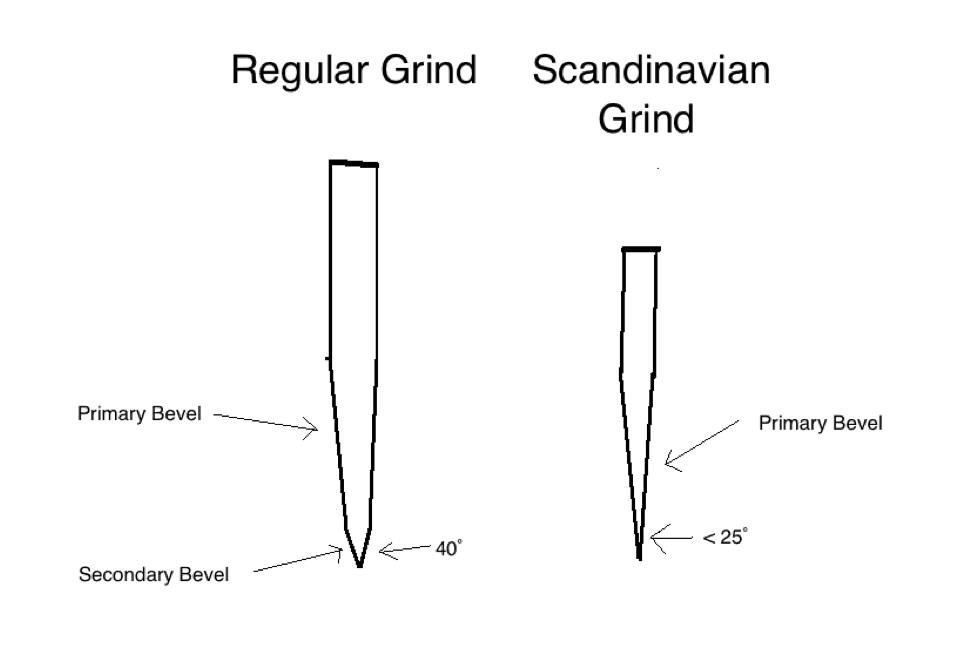
![]()
THE KNIFE AS A REPRESENTATION OF ITS PEOPLE
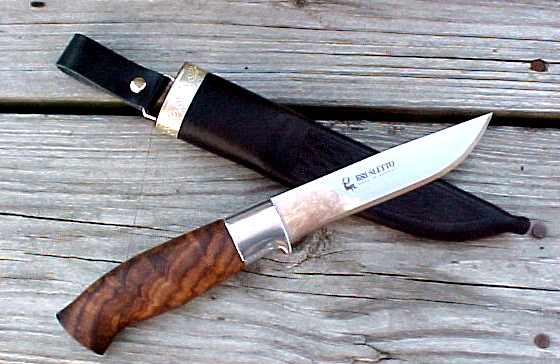
To understand Scandinavian knives, you need to understand the people that developed them. They are a perfect reflection of the cultures that created the basic designs. Like the people of the regions, they are simple, rugged, and no-nonsense. They are not fancy, or pretentious.
The region that would become Scandinavia was populated by hunter-gatherer Home sapiens groups soon after the last Ice Age, around 15,000 BC, from southern Europe. This was the tribal Ahrensburg culture. The tundra became lush forestland around 10,000 BC, and the Ahrensburg culture was supplanted by the Maglemosian and Fosna-Hensbacka cultures. Between 9000 BC and 5000 BC, several cultures made the area their home, mostly hunter-gathers that followed herds of reindeer, salmon runs, seals, etc… These people were migratory and moved south in winter, and to the north in summer. These were the people that eventually found their way across the Bering Strait land bridge into North America. Around 5000 BC, the area became dominated by the Funnelbeaker culture, who had started to make pottery and develop agriculture. Their stone knives were already taking the shape of the modern Scandinavian knife….short, and very, very sharp.
Germanic tribes moved into the area, out, and back in, several times over the next few millennia, and the stone knives gave way to copper, bronze, and finally iron versions, but the basic designs changed little. For some reason, the Roman Empire never tried to acquire the area, possibly knowing ahead of time that the locals would be very tough nuts to crack. That was probably a good call, because even today, Scandinavians are known for being very tough, stoic, and persistent. Soon after the collapse of the Roman Empire, the area evolved into the three main cultures we are concerned about; the Norwegians, the Swedes, and the Finns (Lapps, or Sammi).
NORWAY: LAND OF BRUSLETTO AND HELLE KNIVES
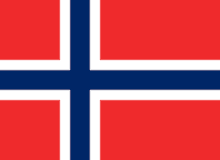
Norway is, of course, most famous for the Vikings. Thousands of articles have been written about their swords, battle-axes, and such, but very little about their knives. Many people do not realize that the Vikings were actually a complete culture, with farmers and craftsman. Their knife actually pre-dates the Vikings considerably. It is styled much like the other Scandinavian knives. Short, single bevel, simple scales. But what is distinctive about Norway’s version is that they are more into looks, and detail than other regional cultures.
Their knives, and sheaths, tend to be more ornate. In Norway, knives were worn as much for a public statement as they were for utility, and one of the greatest honors was to give someone a knife. Today, Norwegian knives cost more than either Finnish, or Swedish blades, but they are worth it, as they are true works of art. Norwegian companies that make outstanding knives today include Brusletto, and Helle Knives.

My favorites. One of my favorite Nordic knives is the Brusletto Kniven Birch Hunting Knife, Model BRU15002. With a wickedly sharp Sandvik 12c27 stainless steel blade, and absolutely beautiful curly birch scales, topped off with a nickel bolster, this knife looks as good as it cuts. At a price of around $70.00 (US), this is a knife you’d want in your collection. Another great knife from Norway is the Helle Harding Norwegian Hunting Knife Model HE99. This may be one of the most gorgeous Scandinavian knives out there. It starts with a proprietary Triple-Laminated stainless steel blade that is not only scary-sharp, but very tough. This is married to exquisite stacked scales of curly birch and maple, with brass spacers. The icing on the cake is that it comes with a fantastic real leather sheath. A little on the pricey side at around $100.00 (US), there is no question that this knife will be worth every penny, both as a valuable tool, and something to Wow your friends with…
FINLAND: THE LEGENDARY PUUKKO
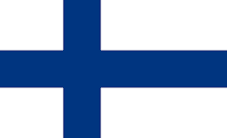
Finland is the home of the most famous of Scandinavian knives… the puukko, and this is the knife that all the others are designed after. The knife was designed by the Sami people back when they were still semi-nomadic hunter-gatherers. The puukko has been around as long as steel in the Northern Lapps, and even before that, was knapped from stone. Some designs are just timeless. You have to figure that this knife has been around this long because it works, and works well. The difference between the puukko and other Scandinavian knives is the degree of appearance they put into it. Puukkos fall right between the ornate Norwegian blades, and simple, utilitarian looks of Swedish knives. One of the top producers in Finland is Kellam Knives. They have a line of traditional puukkos that are of the best quality possible, with their own proprietary high-carbon and stainless steels, called SPT. These blades are among the sharpest in the world, and the traditional styling of most of their models is pure cutlery eye-candy.
If you really want to go super-traditional, they even make some models knapped from flint, with deer antler scales. You can’t get any more traditional than that… Expect to pay anywhere from $70.00 to over $300.00 (US) for their knives, but you are getting the real deal, not a cheap copy.
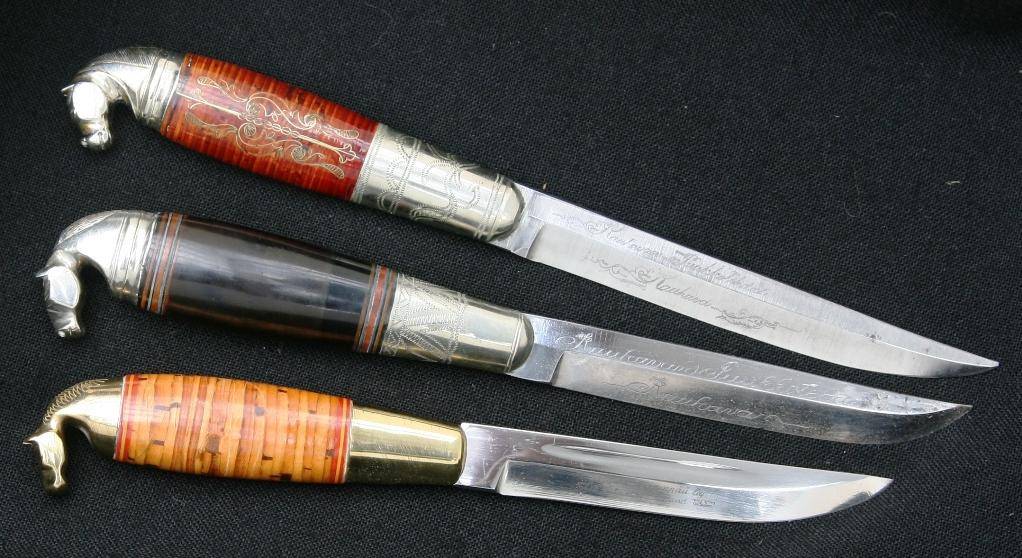
Another Finnish manufacturer is Marttiini Knives. They have been making Finn Knives since 1928. They use lesser-quality production steels, so I can’t really say much about them except they are traditionally-styled, and look good. My favorite in their line-up is the Lapp Knife Model 240. It has a nice-looking etched blade of some kind of mystery stainless steel, which is pretty soft, around 54 RCH. The scales are also engraved. These are nice show-pieces, but I wouldn’t subject them to much hard use. At around $50.00 (US), they are a little pricey for what they are, but they look really great… Most of the rest of really good-quality puukkos are now made by custom knife makers like Nordiska Kniver, and Iisakki Jarvenpaa, but be prepared to spend well over $100.00 for one of their outstanding knives.
SWEDEN: THE MORA KNIFE
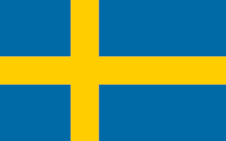
Sweden is the home of what I consider the undisputed King of Scandinavian knives… The outstanding Mora. Sure, there are some more expensive models made in Sweden, but none can outperform a Mora. Nothing on the planet takes and edge or cuts like the Mora.
Mora is not a brand name, but actually a style of knife. Basically a Swedish puukko with a modernized design that was made in the Mora district of Sweden. They were produced by 2 main knife makers, K. J. Eriksson, and Frosts Knivfabrik. In 2005, they merged to eventually become Mora Knives of Sweden. While they still make the classic design with birch scales, they also make several models with modern poly handles and sheaths. Their steels are outstanding, among the best in the industry, and all Moras hold an unbelievably sharp edge, and sharpen easy.

My favorite is the Companion Carbon. With a 3.75” Uddeholm UHB 20C carbon steel blade (also available in Sandvik 12C27 stainless steel), and poly handles and sheath. You can get these just about anywhere, brand-new, in-the-box, for well under $20.00 (US)….an unbelievable value. This knife is so good that it even has Cold Steel worried. Anybody that has read my articles knows I am a big fan of Cold Steel. This year, CS has introduced a new model, the Finn Hawk, touted as a Mora-Killer. I have tested both. Sorry Lynn, but no cigar. While it is an outstanding knife in its own right, it’s not a Mora. It comes very close, but it still cannot match the cutting ability of the Mora, and at over $35.00 (US), is almost twice the price. But hey, you can’t win every time…. My all-time favorite Mora is the Classic, with its red-stained birch scales, and no finger-guard. I have dressed out small game, several deer, pan-dressed dozens of fish, and even field-dressed a buffalo with both Moras, and the jobs were as effortless as it was possible to make them. While a Mora may not cut through large bones, it is so sharp that it glides through ligaments, separating the bones at the joints, and making a bone-saw unnecessary. Skinning is a breeze.
Another great Swedish knife manufacturer is Fallkniven. They make many modern designs based on the traditional Scandinavian knife using modern materials. One model, the F1bz, is the official military-issue knife to pilots and air crews in the Swedish Air Force. It has a 3.8” VG-10 blade, Thermorun poly scales, and a great Zytel sheath. It is sort of like the best of both worlds between traditional and modern. Expect to pay around $200.00…, but WOW! What a knife.
LAST WORDS ON SCANDINAVIAN KNIVES
There is a surge in the popularity of Scandinavian-styled knives going on. The simplistic beauty, and great performance of these knives are making them one of the go-to blades for outdoor enthusiasts. The Mora, in particular, is currently enjoying a must-have status among knife enthusiasts. The style is becoming so popular that many companies outside of Scandinavia, such as Cold Steel, Kershaw, Gerber, etc… are making their own versions, but be warned, none of these ‘feel’ like a Scandinavian knife.
Scandi knives come alive in your hand and seem to take over the job for you. They are all a pleasure to use for just about anything. For a general purpose knife, it is hard to beat Scandinavian knives. If you don’t already have one, take the plunge and find one. You won’t regret it.









